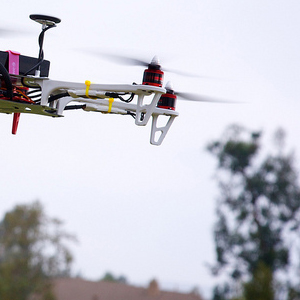Reducing tedium in content workflows with exceptionally mobile technology
The content lifecycle can involve many needlessly tedious tasks. Perhaps the most tedious of tasks is review tracking. There are many ways to send content out for review. Some people prefer using a manual process, others prefer automated workflows. Whatever approach you use is fine, provided one critical detail: that the reviewer actually read the material.
To date there is no sure-fire way to ensure that reviewers read the material assigned to them. No matter how many alerts they receive, and no matter how many times you bug them, there is no systematic way to ensure that reviewers read and comment on the material in a timely manner.
But what if there was?
Unless you’ve been living under a rock for the past few years, there is a wonderful technology being adopted for any number of purposes, from photography to package delivery:
DRONES!!!
Drones are small, highly maneuverable, emissions-free (well, the electric ones are), and they can be piloted automatically using sensors and programmed instructions. They would be the perfect companion to any writer who is desperately chasing after reviews!
Imagine the ease of producing a review copy of a document and having a drone fly it over to a reviewer. To ensure that the reviewer doesn’t miss the delivery, you can configure the review system to monitor the reviewer’s workstation. When activity is confirmed, the drone can fly over, sound off an airhorn, release confetti and drop the document off for review (perhaps with a piece of chocolate for an added incentive and an advance “thank you” to the reviewer).
A few days before the review is due, if you haven’t received feedback, the drone can be sent out to gently remind the reviewer of their responsibility. You can use the same routine as you did in the initial drop-off, or you can equip the drone with any number of attachments to provide an extra incentive. (Please consult your employee manual and HR department before enabling air-to-surface projectiles.)
If the review date arrives and you still haven’t received feedback, you can then switch the drone to Bloodhound Mode. The drone will seek out the reviewer and follow them until the review is complete. Depending on the accessories you equip the drone with, it could play an audible alarm, flash lights, and record what the reviewer is doing instead of reading the material. You can even tie the cameras into your company’s intranet so everyone can see first-hand just how busy your reviewer is!
The applications aren’t only limited to reviews, though. Authors who are approaching their own deadlines can be “motivated” by a friendly visit from the drone squadron, as could subject matter experts who can’t seem to find the time to share critical project information. Add an extra battery or fuel tank and you could even send them out to check on your localizers!
Employing drones in every step of the content lifecycle will achieve results and add excitement to any work environment! You’re certain to see an immediate return on investment as well. As your traditional “office drones” are freed up to perform more meaningful work while the flying drones handle the chasing and hounding, productivity will soar as high as morale will carry it! So choose your features wisely and RELEASE THE DRONES!!!




Sarah O'Keefe
This may be closer to reality that you might think:
https://www.facebook.com/Architecturearts/videos/1107531579263808/
(video)
Jenelle
Drat. This sounds very much like you are trying to automate the hover/visit/search aspect of my job description. OTOH, company-paid drones and confetti would reduce the review cycle by 50%.
Also, reviewers don’t seem to respond to thank yous, and chocolate chip cookies are only somewhat effective.
My fave is a LGTM signoff on a section where concepts are even highlighted as conflicting.